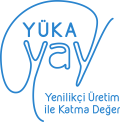NOW IT'S TURN INDUSTRY!
Innovative Interface Structures (YAY) Platform Project Small and medium-sized enterprises (SMEs), which constitute the majority (99%) of the enterprises in the manufacturing industry of our country, carry more than 60% of the employment (employment), but their share in added value is around 25%.
In addition to financial weakness and the low rate of benefiting from financial resources, low productivity, insufficient market and sector knowledge, insufficient technological knowledge and difficulty in accessing this information, weaknesses in management and organization, quality and standard problems negatively affect the competitiveness of SMEs. Despite all these weaknesses, SMEs should always be supported due to their share in exports, their place in supplying the main industry, and their importance in direct product production and processing. It is also a fact that there are a significant number of SMEs with advanced production and management skills that fall outside of these generalizations.
The "triple helix", which is generally accepted in supporting SMEs, is an interactive model established between university-industry-public. The Innovative Interface Structures (YAY) Platform Project(1), which has this model at its center and was designed with an innovative approach, started to be implemented in Istanbul. Marmara University Innovation and Technology Transfer Application and Research Center (MITTO) is the coordinator of the project, which is supported within the scope of Istanbul Development Agency Innovative Creative Istanbul Financial Support Program.
YAY Project, Sabancı, Özyeğin, Okan, İstanbul Kültür and İstanbul Arel universities, İstanbul Technopark, University Industry Cooperation Centers Platform (ÜSİMP), Anatolian Side Organized Industrial Zone, SUNUM (Ministry of Development, Advanced Research Infrastructure), VSY Biotechnology and Atabay İlaç R&D Centers are supported by partnership and participation. This configuration conforms to the triple helix model. The structuring of the project as a platform also allows the participation of a wide audience, as it will enable the parties to come together on a voluntary basis for the same purpose.
In the project to be implemented around Istanbul, unlike the classical university-industry cooperation trials, it is primarily aimed to increase the capacities and competencies of interface structures (such as technology transfer offices and industrial R&D Centers). Thus, it will be tried to ensure that the interface structures in question can provide the right services for the needs with user-oriented approaches.
The high enthusiasm, leadership and willingness of the academic side based on self-sacrifice in the project are promising. Establishing access to the resources of universities, where information is produced, which is the basic requirement of technology-based companies, seems to be essential for the success of the project. It seems obligatory for the parties involved in the project (primarily the industrial side participating at the institutional level) to change the way and variety of service delivery, and moreover, the culture of cooperation and management, by improving their institutional capacities. Similarly, SMEs who want to solve their technological and managerial problems based on knowledge and increase their competitiveness must first be aware of the value of information. In order to determine the solution of the technological and managerial problems of SMEs and to solve them in the formula of "Access-Matching-Collaboration", all the capacities and opportunities of the parties are mutually known, visible and accessible. In summary, it is necessary to create a strong database, continuously develop and update it and manage it.
The structuring and objectives of the project also give the project the "micro-scale regional innovation system-micro-RIS" feature. I hope that the project will be an exemplary study that can be applied to different regions, with its innovative features, resulting in a successful model that will break the mold of "university and industry do not understand each other's language". Good luck with...
Müfit AKYOS - Political Science
HBT Issue 155 - March 15, 2019
